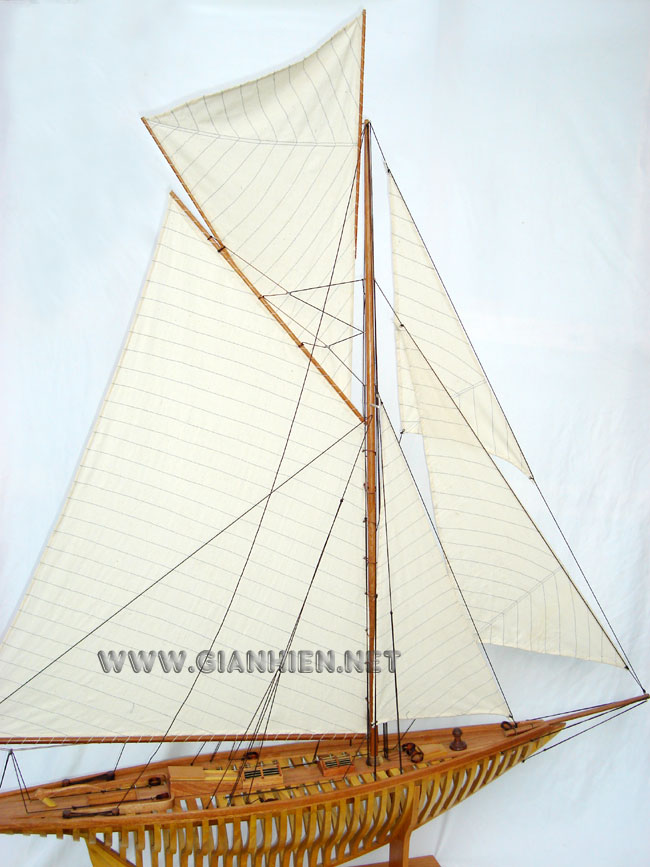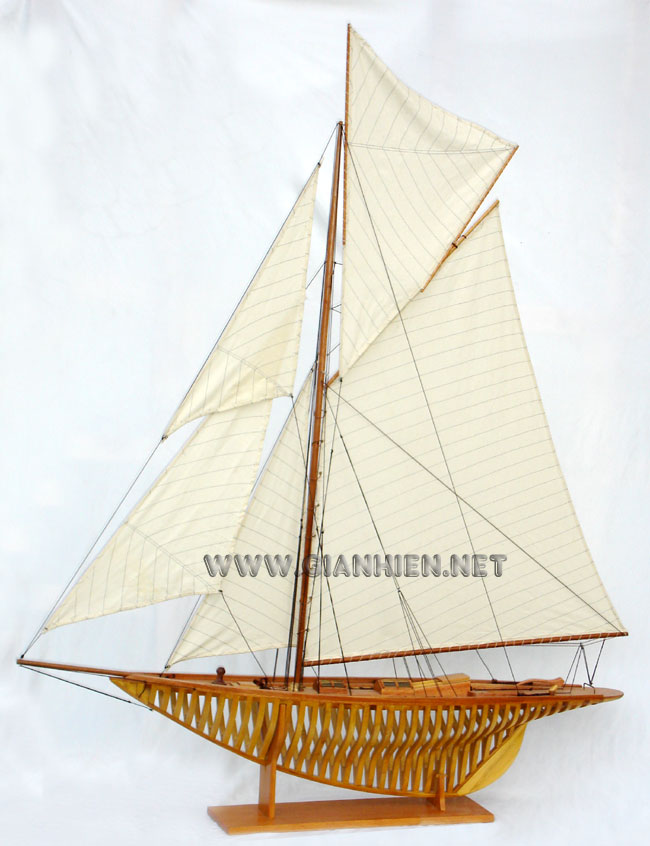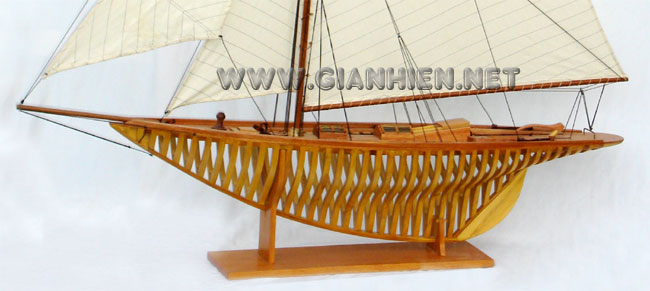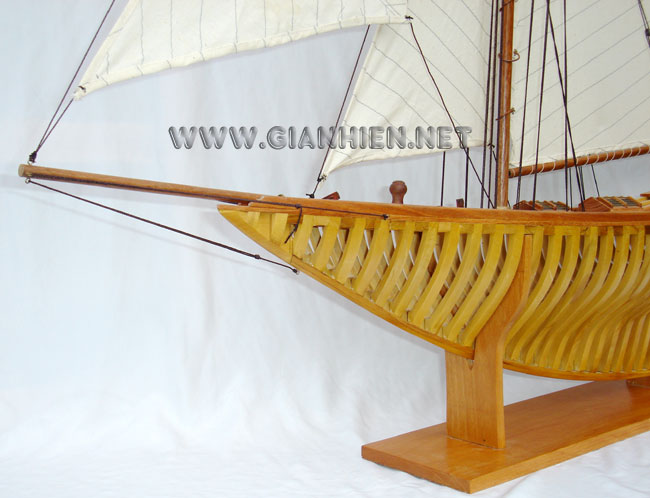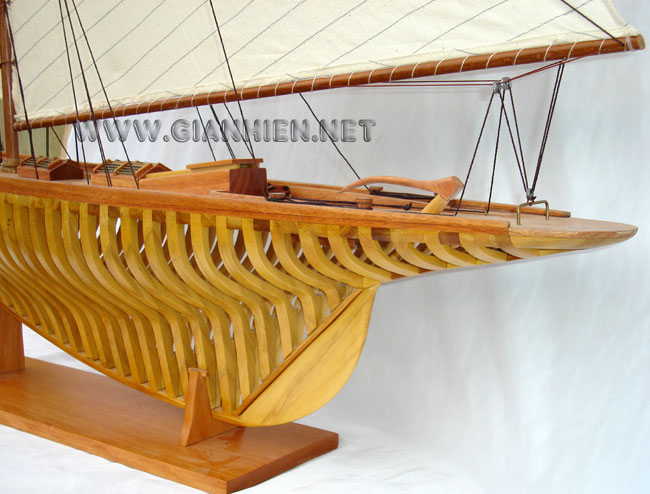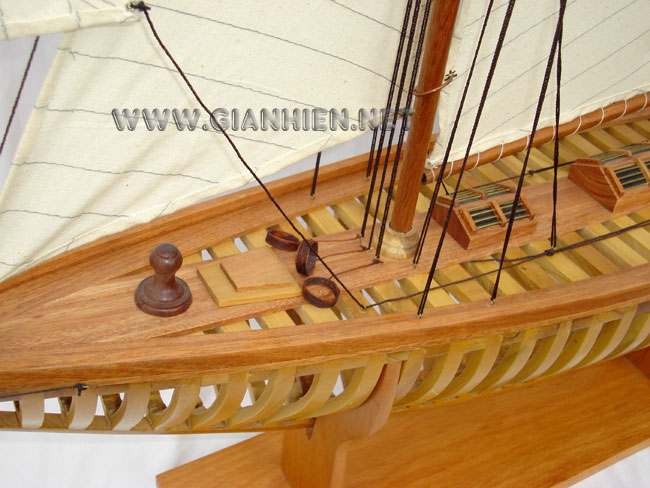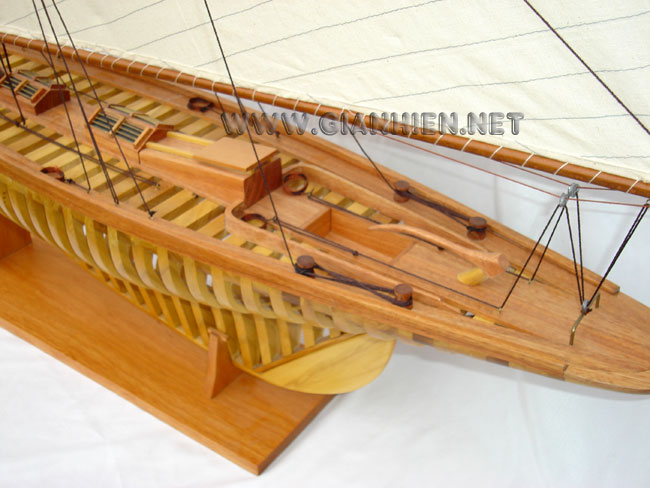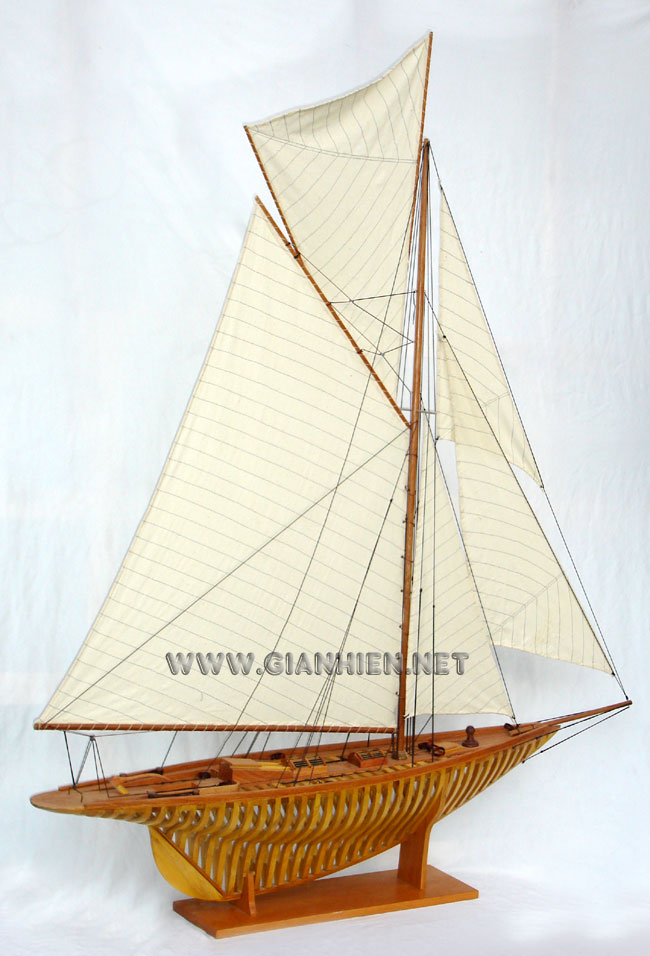|
Pen Duick VI - 250,000 nautical miles in
the logbook
The
sixth Pen Duick was designed for IOR
(International Offshore Rule) races, in
particular the first Whitbread, the
fully-crewed round-the-world race held
in 1973/74. Nevertheless, however
strange it may seem, the large aluminium
ketch measuring 22 metres would enjoy
her greatest moment of glory after her
historic victory in the single-handed
transatlantic race in 1976. Eric Tabarly
himself stated that it was his finest
ever victory. She would then go on to
have a formidable career sailing on all
the oceans of the world teaching
deep-sea navigation to countless crewmen
and women, some of whom would become
famous. She is now based in St-Malo and
continues to introduce people to the
joys of oceanic sailing throughout the
world.
An original finance package.
In 1973, the date of the creation of the
Whitbread race, no large "classic" boat
had ever crossed into the southern
hemisphere in competition. Eric Tabarly
designed Pen Duick VI specifically for
this programme, as well as the other IOR
races. The race offered a complete route
through calms, trades and downwind in
storms.
The construction of such a large yacht
in aluminium alloy at the Brest arsenal
–almost thirty tonnes- required a
considerable budget. Tabarly had no real
personal fortune. At the beginning of
the 70s, sponsorship had not yet been
developed and the Breton yachtsman
wished to keep the name Pen Duick. The
financial package put together for the
sixth Pen Duick marked its time through
its originality and prefigured the
sponsorship deals of the 80s. The
package was devised by Michel Leberre,
advertising executive, and Gérard
Petipas, who had sailed for many years
with Tabarly. A pool of suppliers united
with a common goal would participate in
the primary expenses.
1973. Unlucky Whitbread.
André Mauric, an architect from
Marseilles and rule boat specialist,
particularly attentive to the delicate
problem of the equilibrium of vessels,
was selected for the design of Pen Duick
VI. With her 32 tonnes of weight,
25-metre high main mast, 150 m2 jibs and
350m2 spinnakers, Pen Duick VI is one of
the most beautiful boats in the world.
From her first trials on she proved to
be particularly fast, powerful and
balanced. But against all expectations
two dismastings ruined any hopes of her
winning the round-the-world race that
set off from Portsmouth in September
1973. On her way back to Europe, Pen
Duick VI rounded Cape Horn on 2 March
1974. Nevertheless, as two ocean
crossings reveal, from Rio de Janeiro to
Cape Town and Cape Town to Sydney, the
ruthlessly manned large class 1 yacht
was capable of performances never seen
before in the history of offshore
racing. Even though the yacht was not
classified, the crew of Pen Duick VI
enjoyed some exceptional moments. For
the first time, Éric and his crew were
able to stare at the rocky mass of Cape
Horn which peaks et 400 metres. Bernard
Rubinstein, Bernard Deguy, Marc Pajot,
Mikaël Leberre, and the “veterans” like
Olivier de Kersauson took part in the
voyage. Three of Tabarly’s boats would
successfully round the infamous Cape in
1974. Pen Duick III skippered by Marc
Linsky left Tahiti in her trail and
headed back to Europe after a long
voyage in the Pacific. Manuréva, ex-Pen
Duick IV, manned by Alain Colas, also
set off from Sydney on her return
journey to France via the Horn.
The large yacht then took part in other
events. She raced in the classic 1974
Bermuda race and the 1975 Fastnet. That
year she won the Atlantic Triangle, a
large loop starting in St-Malo, heading
down the Atlantic, stopping over in Cape
Town, on to Rio and back to Portsmouth.
Eric took a young crew on board whose
lives would be changed forever. Eric
Loizeau, Philippe Poupon and Pierre
Lenormand all remember magic moments
aboard.
During the Rio stopover, Tabarly learned
that it would be impossible to build the
multihull he was dreaming of for the
next OSTAR in June 76. He took the huge
gamble of entering the race on Pen Duick
VI which underwent a few small
modifications. Given that competitors
have to perform a qualification route of
500 nautical miles with their yacht,
Tabarly disembarked his crew for a few
days in Brazil and headed out to sea
alone to complete the formality.
More obstinate than ever, Tabarly won
his bet. A few months later he sailed to
Plymouth to take part in a single-handed
transatlantic race on board a yacht
designed for a crew of fourteen. 1976
was the year of extravagance. One
hundred and twenty boats took part in
the event. Vendredi 13 (40m) was one of
the starters. But the favourite was the
72-metre long four-master Club
Méditerranée, skippered by Alain Colas,
the winner in 1972.
1976. Triumphant Transat.
Against all expectations, with some
people even thinking she had
disappeared, Pen Duick VI came out of
the fog in Newport on the morning of the
23rd day of racing. She had crossed
through four strong depressions, turned
back and then continued. She finished
ahead of Club Méditerranée who had to
call into port in Newfoundland for sail
repairs. Nobody noticed the yacht as she
crossed the finish line and she sailed
on into port. It was only then that Éric
Tabarly learned he had won his second
Transat.
He told the first journalists who
stepped on board how difficult the race
had been with five violent depressions
and autopilot failure which almost led
him to retire. "The fifth depression was
the worst. The wind wasn’t very strong,
but the waves were very sheer. There was
an abyss that opened in front of the
boat. She went into freefall. It made an
awful noise. The boat had never been hit
so hard. She had never been so shaken
before. My wind gauge which goes up to
60 knots was blocked for several hours.
It’s a lovely sight when you see the sea
white with foam swell up volleys of
spray on the crest of waves. It’s also a
sign that the wind is really blowing
hard.” Of the 120 boats at the start, 40
did not finish and two competitors were
tragically lost at sea.
Playing Hooky.
The crew of Pen Duick VI played hooky in
the Pacific. In order to get to Auckland
for the round-the-world race in 78,
Tabarly and his merry men crossed the
Pacific from Los Angeles to Tahiti. They
danced the Tamouré in the Marquise
islands, played football against the
natives of the Tuamotu Isles and picked
bananas and coconuts in Gambiers. It was
a fantastic learning experience for the
young crew who included Titouan Lamazou,
Jean-Louis Etienne, Jean-François Coste,
Philippe Poupon and Olivier Petit...
In 1981, Pen Duick VI was renamed
Euromarché for the third Whitbread. The
yacht was given a complete overhaul at
the Pouvreau de Vix shipyard in the
Vendée department of France: a new keel
weighing twelve tonnes with a draft of
3.90 m, a new engine, remodeling of the
hull bodywork disfigured by thousands of
miles, rewiring of the electrical
circuits, modernization of part of the
upper works, and, more generally, a
serious attempt to reduce the weight of
the yacht by about 4 tonnes. But the
other yachts had also progressed
architecturally and Euromarché only
finished in tenth place out of the 20
classified boats.
Today
Successive rule
changes and constant technological
improvements borrowed from the
aeronautical domain mean the performance
of Pen Duick VI is obsolete today. But
her marine qualities make her a fine
offshore cruising vessel. From Greenland
to the Antarctic, from the Atlantic to
the Pacific, she never stops teaching
life at sea to her young apprentices.
She mainly belongs to the Tabarly
family, as well as to the « Pen Duick
Cruising Club ». The winner of the 76
OSTAR performs cruises around the world
under the management of Arnaud
Dhallenne. Since 1986 the large black
ketch has crossed the Atlantic each year
to spend the winter in the West Indies,
returning to St-Malo in the spring. This
means that for the last fifteen years
she has logged about 10,000 nautical
miles a year. In 2002, after
accompanying the competitors at the
start of the Route du Rhum in St-Malo,
she again headed for the West Indies for
the winter. She is due back in France at
Easter and will be sailing in the
English Channel until early summer. She
will then be based in the Mediterranean
before leaving Europe again for the cold
climate of the Antarctic and finally
heading back up to the Pacific. (Info:
www.club-penduick.com)
On board Pen Duick VI
“In 1981, for her third round-the-world
race, she was fairly out of date. She
was much heavier than the other yachts.
The foresails weighed tonnes and
everything was so tight it could break
under maximum tension. Maneuvers were
really physical and every time Eric was
on the deck. During the second leg
(Indian Ocean), we tore our nine
spinnakers. But just feeling the monster
hurtle down the slopes was really
impressive. There was no way Eric was
going to ease up, even though the
equipment was breaking around us.”
Jean Le Cam / Extract from Bateaux
Magazine |

